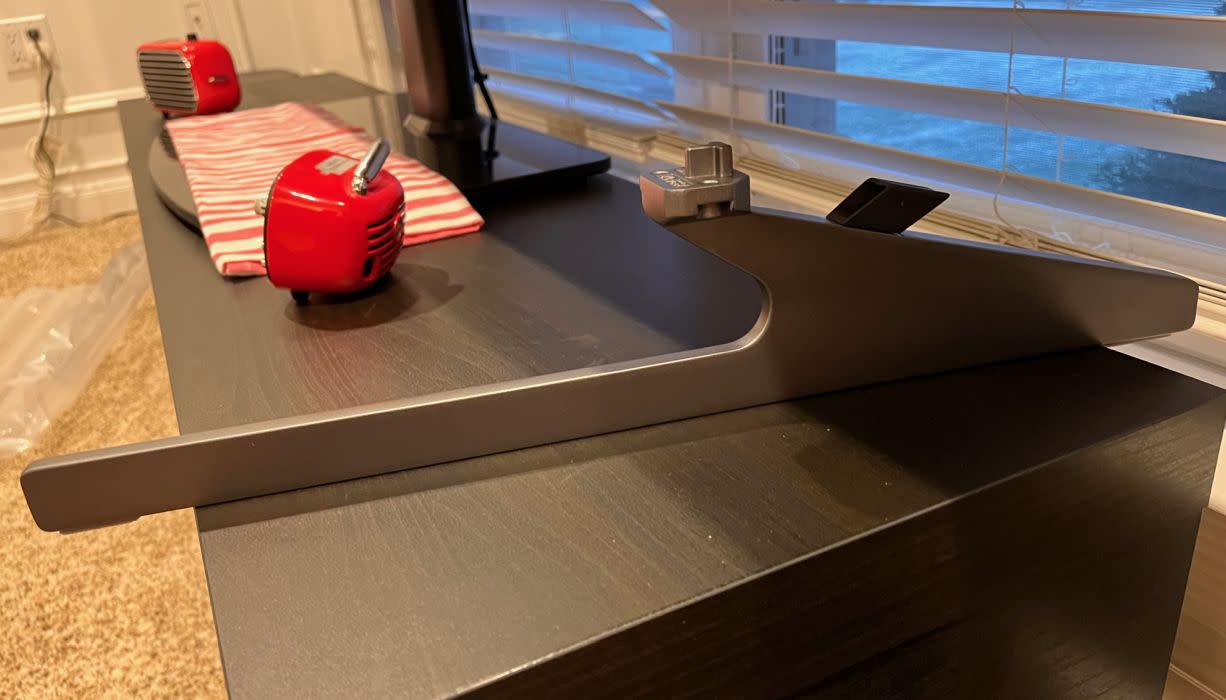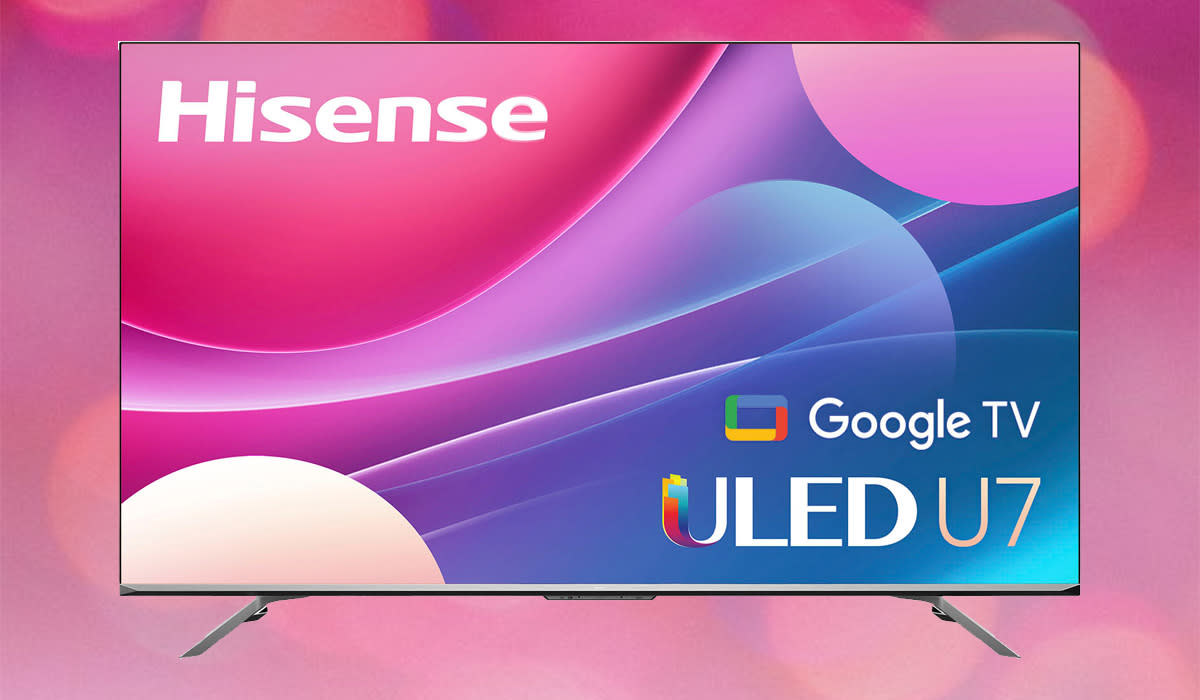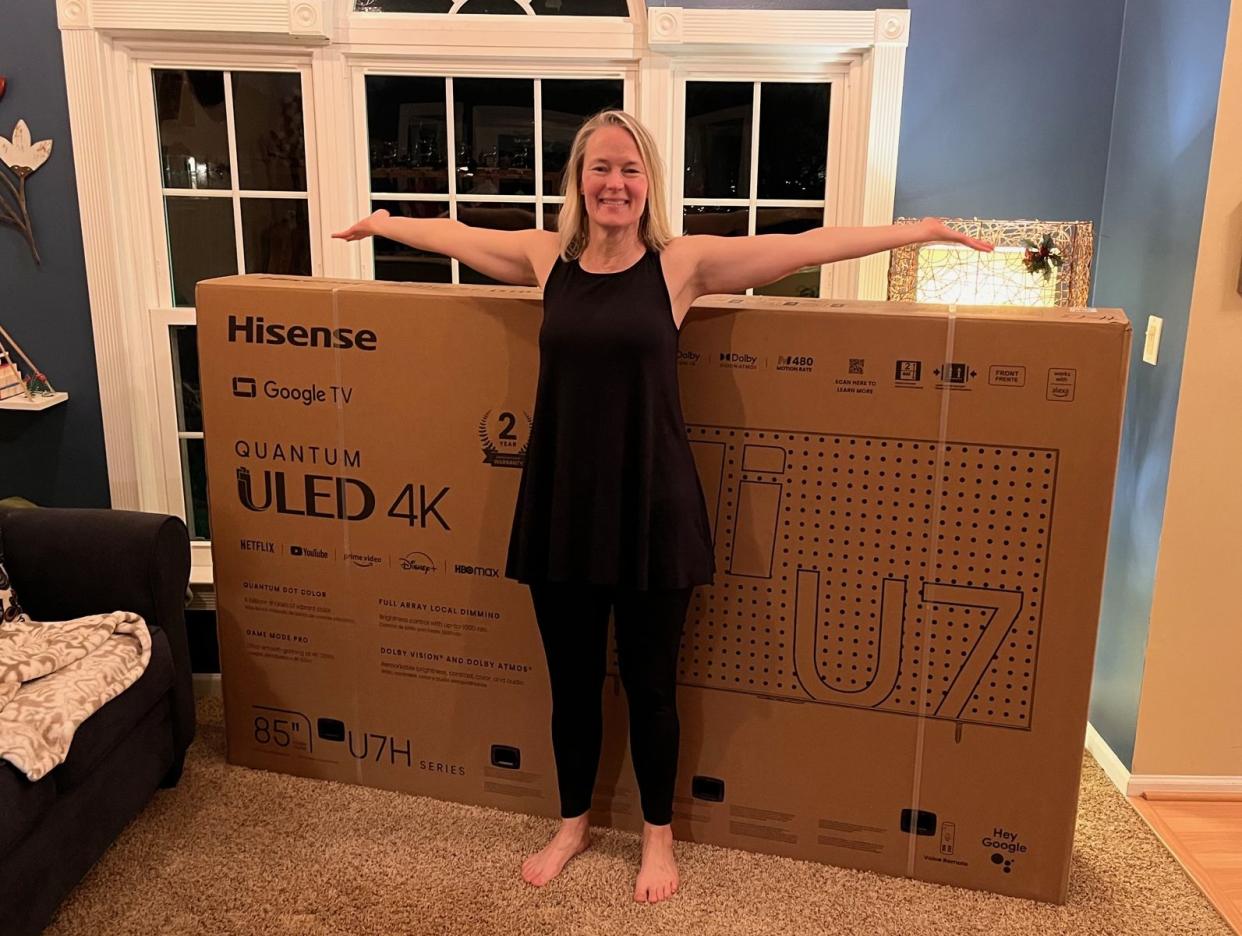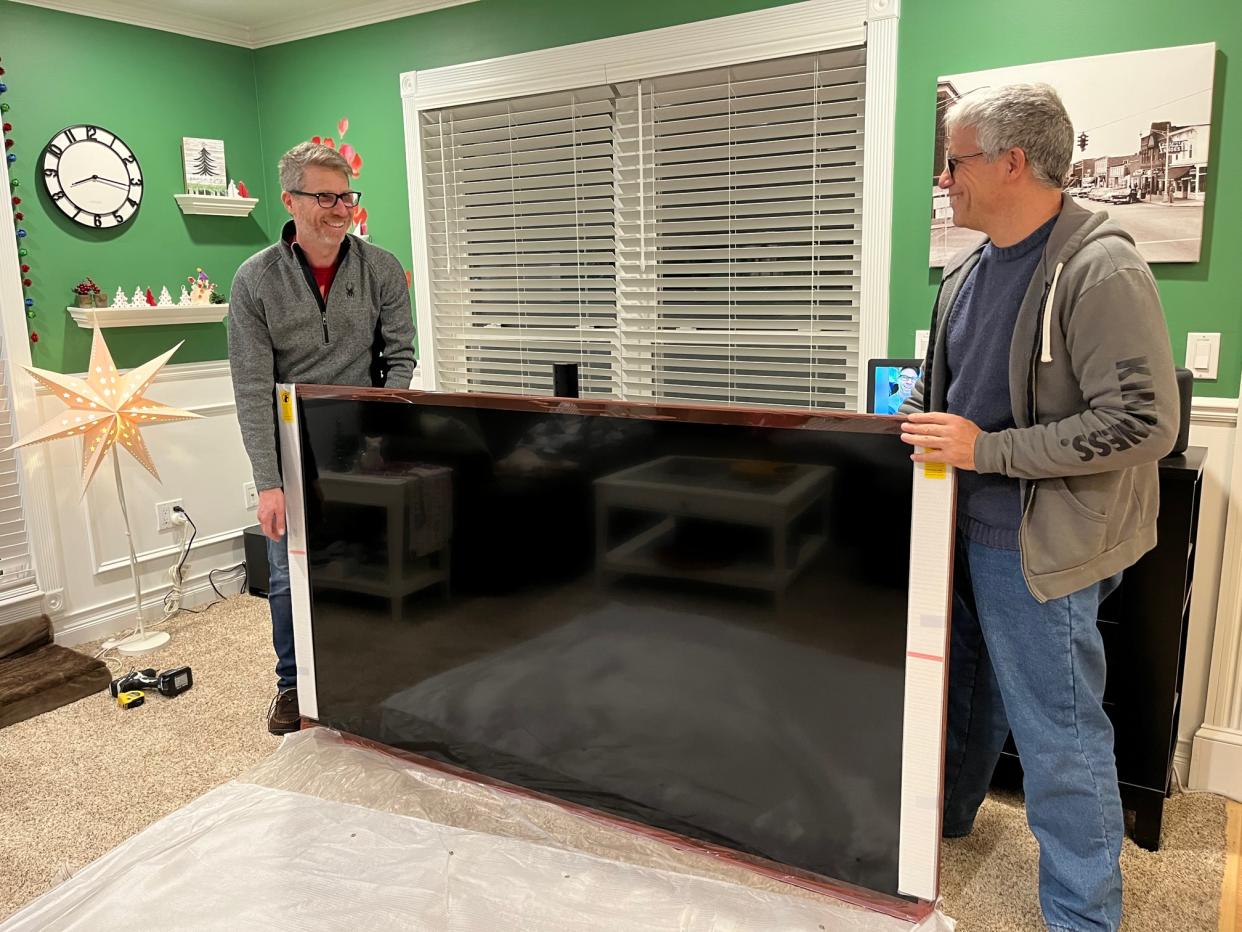Can a TV be too big? Here's what happened when I brought home an 85-inch screen
Like most people with eyeballs, I want the largest TV screen I can get. The Disney Plus series Andor deserves to be seen at theater-size. Same goes for Detroit Lions games now that they're actually playing good football. (Can't believe I just wrote that sentence.) So now that super-massive TVs are starting to get affordable, maybe it's time for an upgrade?
First things first: Just how super-massive and affordable are we talking? Around Black Friday, there was an 86-inch model selling for just under $1,000, the first time I've seen a screen that size dip that low. At this writing, you can get an LG UQ75 Series 86-inch TV for $1,197 at Amazon. There's also a TCL 4 Series 85-inch at Best Buy, also $1,200, and a Samsung Class 7 Series 85-inch for $1,300. Upcoming Super Bowl sales may see one or more of these hit three-figure pricing.
But wait! Before you plunk down your credit card (or whatever the online-ordering equivalent of that is), you should take a close look at your room: the layout, the walls, the furniture and so on. Because an 85-inch TV is big. Really, really big. I know this because I recently reviewed the 85-inch Hisense U7H (which is pretty great, by the way) and learned a few things — some of them the hard way.
Can you get it home from the store?
I know from past experience that a 75-inch TV, never mind an 85-inch, barely fits in a typical minivan (in my case a Chrysler Pacifica). I had to put down every seat and push the driver and passenger seats forward as far as possible while still being able to drive. Even then, the rear gate wouldn't quite close; I had to borrow some twine to tie it down for the trip home.
The box for the 85-inch Hisense U7H measures nearly 7 feet long and over 4 feet wide. Pictures don't do it justice; it's mammoth. You could probably juuust fit that in the bed of a standard pickup truck — but it would likely overwhelm a short bed.
So for this and other 85-inchers, a minivan won't do it — but a pickup might. Needless to say, if free delivery is an option, you should take advantage of it. You'll almost certainly need help getting it unpacked and installed, but at least someone else can bring it as far as your door.
Can you get it into your house?
You'll also need at least two people to bring it inside; the U7H weighs 90 pounds, and that's not counting the box and packaging. The aforementioned LG, Samsung and TCL models: 100, 91 and 100 pounds, respectively.
I was able to slide the mammoth Hisense box from front door to living room, but it took some effort. Similarly, just getting it out of the box was challenging, as there's always the risk of it tipping over. A helper is absolutely essential.
If you're thinking about a wall mount, it goes without saying you'll need extra hands for that as well. Read on for more TV placement considerations.
Will it fit your furniture (or your wall)?
There's one thing most people overlook when upgrading to a large TV, and that's where it's going to live. For example, if your current TV is sitting on a stand, you'll need to make sure it's large enough — and solid enough to support the weight. (As noted above, an 85-inch TV can tip the scales at 90-100 pounds.)

Start by measuring your stand's length and depth. Then check the TV's "minimum stand width" and "depth with stand." Although the feet that come with the Hisense U7H are width-adjustable (able to sit as little as 24 inches apart), they require a depth of nearly 18 inches, which would leave out a lot of standard-size TV stands. The Samsung model offers width-adjustable feet as well, but the LG and TCL have fixed widths of 60 and 71 inches. Bottom line: You might need a new piece of furniture.
Or not: Instead of installing the U7H's feet, I purchased a universal tabletop TV stand with a base that's just 13 inches deep. Able to hold TVs up to 86 inches (thanks to its widely compatible VESA mounting brackets), it allowed me to fit the U7H on my existing table.
If you're thinking of wall-mounting your TV, well, you're going to need a pretty big wall. This time, check the actual TV's measurements, then make sure it'll fit the space where you intend to hang it. Most 85-inch TVs stretch about 75 inches wide and 43 inches high.
Needless to say, make sure the wall mount you buy is designed for a TV of this size and weight. And that you're able to locate studs in the wall, because, well, drywall won't hold 100 pounds.
Will it destroy the décor?
There's another often-overlooked consideration, and that's the way a huge TV can overwhelm a room. It depends on the space, of course, and whether décor is a primary concern, but a massive slab of black glass may not be the look you want.
On the other hand, if you wall-mount it, you can use it as a digital photo frame or virtual art museum when you're not watching shows. TVs with the Android or Google TV operating system built in have special screensaver modes that can display a personal photo library or famous works of art. Some of Amazon's new Omni Series TVs do that as well, and Roku users can install various artwork "channels" for that same purpose.
Will you be able to sit back far enough?
Ever have to sit in the front row at a movie theater? Not fun. Depending on the size and layout of your room, a too-big TV could similarly cause discomfort: eyestrain, neck pain and so on. According to a chart at Rtings.com, you'd want a minimum distance of 10 feet from a TV that's 75 inches and 12 feet from an 85-inch. A smaller room doesn't necessarily need a super-huge TV, because you end up sitting closer to it.
Are you better off with a 75-inch?
Right now, absolutely. For starters, you might be able to squeeze it into a minivan, and you'll definitely find it a bit easier to lift. It's more likely to fit your existing furniture, too, as well as your actual living space.
But the real consideration is price: Although 85-inch models are definitely coming down, that extra 10 inches comes at a premium. For example, the 75-inch Hisense U7H is currently on sale for $1098, a whopping $650 less than the 85-inch. The 75-inch Samsung is priced $620 below the 85-inch model. Heck, if you're hunting for a bargain, Best Buy currently offers the TCL 4 Series 75-inch Roku TV for just $600. Until Super Bowl sales kick off in January, you'll be hard-pressed to find an 85-inch model below $1,200.
So as much as I truly love the Hisense U7H, for now I recommend choosing a 75-inch TV — which, make no mistake, is still pretty darn big.



